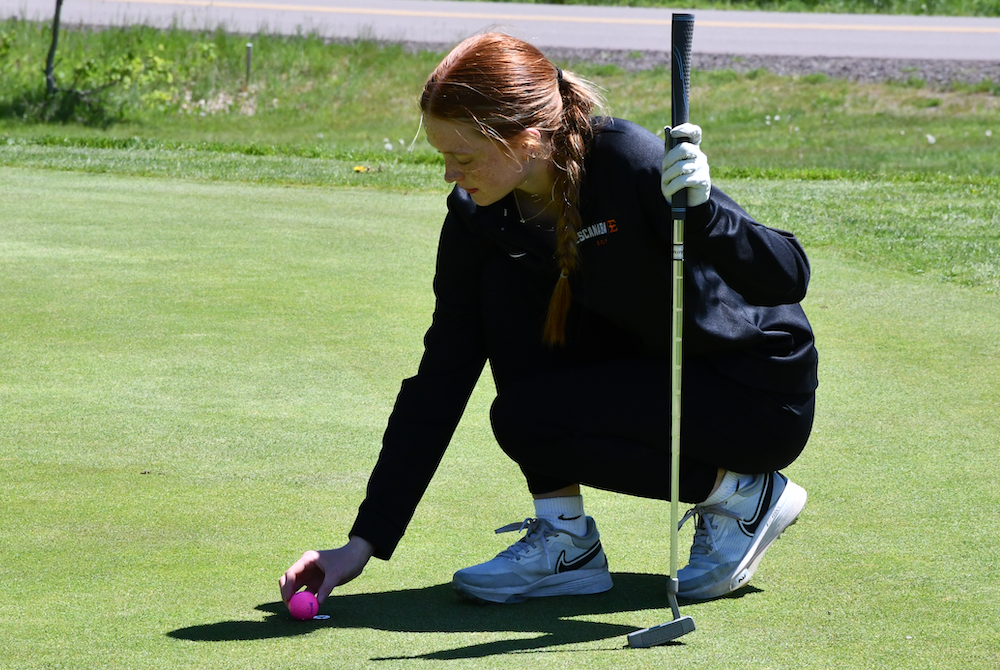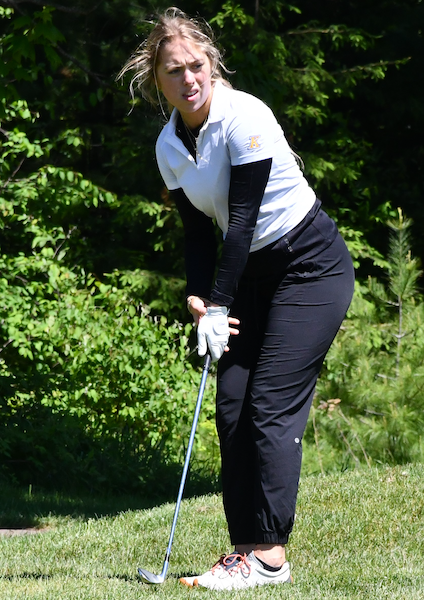
Keep on Coaching
February 1, 2013
By Geoff Kimmerly
Second Half editor
A few weeks ago, I finally got my first chance this season to watch a friend coach his basketball team. After guiding some others at the lower levels, this is his first time running the varsity – something he wasn't sure he wanted to do with a 1-year-old just learning to walk, but a challenge he ended up taking on to the benefit of all those involved.
Simply put, he’s good. I've seen a lot of teams and a lot of coaches over the past 15 years, and although I wouldn't know much of what to do if I were walking the sideline, I felt pretty qualified in telling him I was impressed – even if he didn't buy that I was offering an unbiased opinion. The best news is he’s gone from not sure about this a few months ago to talking about next season.
We know, at least anecdotally, that coaching continues to get more challenging. The time commitment has grown substantially to make running a program a year-round endeavor in a lot of sports at a lot of schools.
That commitment – especially for coaches with children of their own – was a main reason referred to in a New Haven Post-Chronicle story Saturday that noted 23 football coaching openings in Connecticut at one point this offseason. That state has 146 football teams – meaning roughly 15 percent will have new leaders this fall.
And that got me thinking about my friend, about how glad I am he’s given this a shot, and how I've seen so many others either not do so, or not stick around long despite having some pretty nice success.
A study published last winter in Interscholastic Athletic Administration magazine – a product of the National Interscholastic Athletic Administrators Association – noted some predictable results of a study that sought to determine the biggest challenges faced by first-year high school coaches.
The toughest according to the study was balancing the demands of coaching and teaching, experienced by nearly half the respondents – 98 percent of which coached high school teams and 81 percent of which are teachers.
The next six reasons all were noted by at least 30 percent of those in the study – personal fatigue, securing community support, securing and caring for facilities and equipment, parental contact, keeping non-starting players motivated, dealing with schedule interruptions and motivating athletes to achieve consistent, peak performance.
Nothing there is earth-shaking, and most if not all of these challenges are faced by high school coaches regardless of how long they've been in the field. But I got a little more perspective from some of the 32 items that ranked as least challenging to the first-year leaders – keeping in compliance with state and league regulations, dealing with substance abuse issues, teaching sport skills and creating a positive team atmosphere – things that seem most important, and yet appear to be easiest to do. I’m not sure what that tells us – but I think it tells us something.
Click to check out the entire three-page breakdown of the study, plus the researchers’ recommendations to remedy some of what first-year coaches face.
Giving back to Saginaw
I love reading about high-level athletes – like a star-studded group of alums from Saginaw – giving back to where they got their starts.
Pittsburgh Steelers star LaMarr Woodley made a big impact before the start of this school year by donating $60,000 to cover all participation fees for athletes in his former school district. The Saginaw News’ Hugh Bernreuter writes today about how Woodley (Saginaw High), the Philadelphia 76ers’ Jason Richardson (Saginaw Arthur Hill) and former Oakland Raiders standout Stu Schweigert (Saginaw Heritage) have combined to give more than $865,000 back to their home communities.
Bernreuter also mentions the non-monetary contributions of the Golden State Warriors’ Draymond Green (Saginaw High) and former Indianapolis Colts receiver Blair White (Saginaw Nouvel).
Click to read more about it.
Quote(s) of the Week
While rifling through more papers on my desk, I found an article from the Washington Post from Sept. 2011 titled “How high school sports save our schools.” I was drawn to it in part because I spent more than a decade in a newsroom, and it was a piece by a reporter covering education who instead of reporting on school boards and the like, delved into the importance of interscholastic athletics to education as a whole.
He spoke of how participation continues to grow even as resources dwindle, and of data supporting that extracurriculars like sports are more effective than academic classes in teaching leadership, teamwork, time management and “other skills crucial for success in the workplace.” Later, he mentioned a study noting that those who participate in extracurriculars earned more a decade later.
Click here to read the entre piece. These passages struck me most.
“Coaches might be the only faculty members still allowed by our culture and educational practice to get tough with students not making the proper effort. They have the advantage of teaching what are essentially elective non-credit courses. They can insist on standards of behavior that classroom teachers often cannot enforce because the stakes of dismissing or letting students drop their courses are too high. …
“Students do better in activities they choose. If we provide more of them, led by committed adults … that can make a difference. We know the bad news about education. Dropout rates are high. Achievement scores are stagnant. But sports participation is going up, despite pressure to cut it back. Let’s cheer about that and look for a way to draw in more students.”

Medalist Scott Leads Escanaba Charge Back to Top of UPD1 Leaderboard
By
Jack Hall
Special for MHSAA.com
May 29, 2024
CHAMPION – Escanaba is back on top in high school girls golf after winning the MHSAA Upper Peninsula Division 1 championship Wednesday at the Wawonowin Country Club.
The Eskymos won their fifth Finals title since 2016 by defeating last year's champion, Kingsford, by 22 strokes (399-421). Negaunee was third, 23 strokes back (422).
“It's been an up-and-down season,” Escanaba coach Jake Berlinski said. “It's a short season. The girls have worked so hard and in the end of it, we came through. The girls played great when it mattered the most. That's all you can ask for.”
Escanaba was led by sophomore Kamrie Scott, who won the medalist honor by shooting an 83. She was eight shots clear of runners-up Grace Maki (Kingsford) and Abby Dart (Houghton), who both carded 91s.
“This course, there are some holes that are tough, but I think I played it pretty well,” Scott said. “I was hitting them straight, and my putting was good, so things were going well. I was just going for the pin today. I was making putts, so it was working.”
Maki battled over the final four holes to earn a share of the runner-up honor for the Flivvers, and for herself, personally.
“I love this course,” Maki said. “I had some struggles. I had some 6s out there, but I did my best. My best hole was actually No. 2, which I birdied.”
Negaunee's Kennidy Glasheen and Marquette's Abby Luke finished tied for fourth, both with 96s. It was the last U.P. Finals for Luke, who made an impression with a hole-in-one at the 2023 championship tournament held on the ultra-tough Sage Run Golf Course.
 The only other sub-100 score this time around was turned in by Escanaba senior Maddie Wilson, who carded a 97 to finish in the sixth spot. It was her fourth UP Finals, and by far her highest finish on the leaderboard.
The only other sub-100 score this time around was turned in by Escanaba senior Maddie Wilson, who carded a 97 to finish in the sixth spot. It was her fourth UP Finals, and by far her highest finish on the leaderboard.
“It feels good, but it's a little bit sad,” Wilson said. “I'm glad we were able to pull away for our last year. Personally, for me, I just tried to stay really positive, and not get myself down during a bad shot. And especially tried not to get tired toward the end, because walking 18 holes is a lot. And I really focused on my putting today, which I feel helped me in the long run.”
Kingsford came out of nowhere in 2023 to win its first girls golf U.P. title in school history, and this year the Flivvers rallied down the stretch to take second place ahead of Negaunee. The Miners occupied second spot for most of the round before the Flivvers ended up with the runner-up trophy by one stroke.
“We saw the course was playing tough, across the board; top to bottom, scores were a little higher than normal,” Kingsford coach Ryan Pepin said. “The girls battled right to the end. We weren't sure how it was going to finish up. We're really proud of them. Great season.”
Pepin had just four golfers this year (three seniors and one sophomore), but they still managed to win the majority of their matches in the Great Northern Conference during the regular season.
“Our girls performed well,” Pepin said. “We went to battle every time with only four. Our seniors had great careers, the last two years, especially.”
Negaunee coach Dustin Hongisto said it was a great day for his group of Miners.
“I felt they played awesome,” Hongisto said. “They were just kind of a step back from these (top) teams all year, but all five of them played awesome today. I was really proud of my No. 1 girl, Kennidy. She shot her low round of the year. The fact that they lost by one at the end was a bummer, but I'm proud of them.”
Scott says it felt great to win the individual medalist honor, but she was even happier that the whole Escanaba team pulled through.
“I'm really proud of us,” she said. “We worked really hard this year, and it paid off. Just staying positive, and I think that helped us.”
Fellow Eskymos senior Sophia Derkos, playing in her fourth U.P. Final, summed it up.
“We work really good as a team,” she said. “We're very positive toward each other. There's a lot of hazards on this course, like waters and trees. I was just trying not to hit 'em in it, and it was hard, but we made it!
PHOTOS (Top) Escanaba’s Lilly VanDamme lines up a putt during the Upper Peninsula Division 1 Final at Wawonowin Country Club. (Middle) Kingsford’s Ela Rizzo sends an approach shot during her round Wednesday. (Photos by Jack Hall.)

